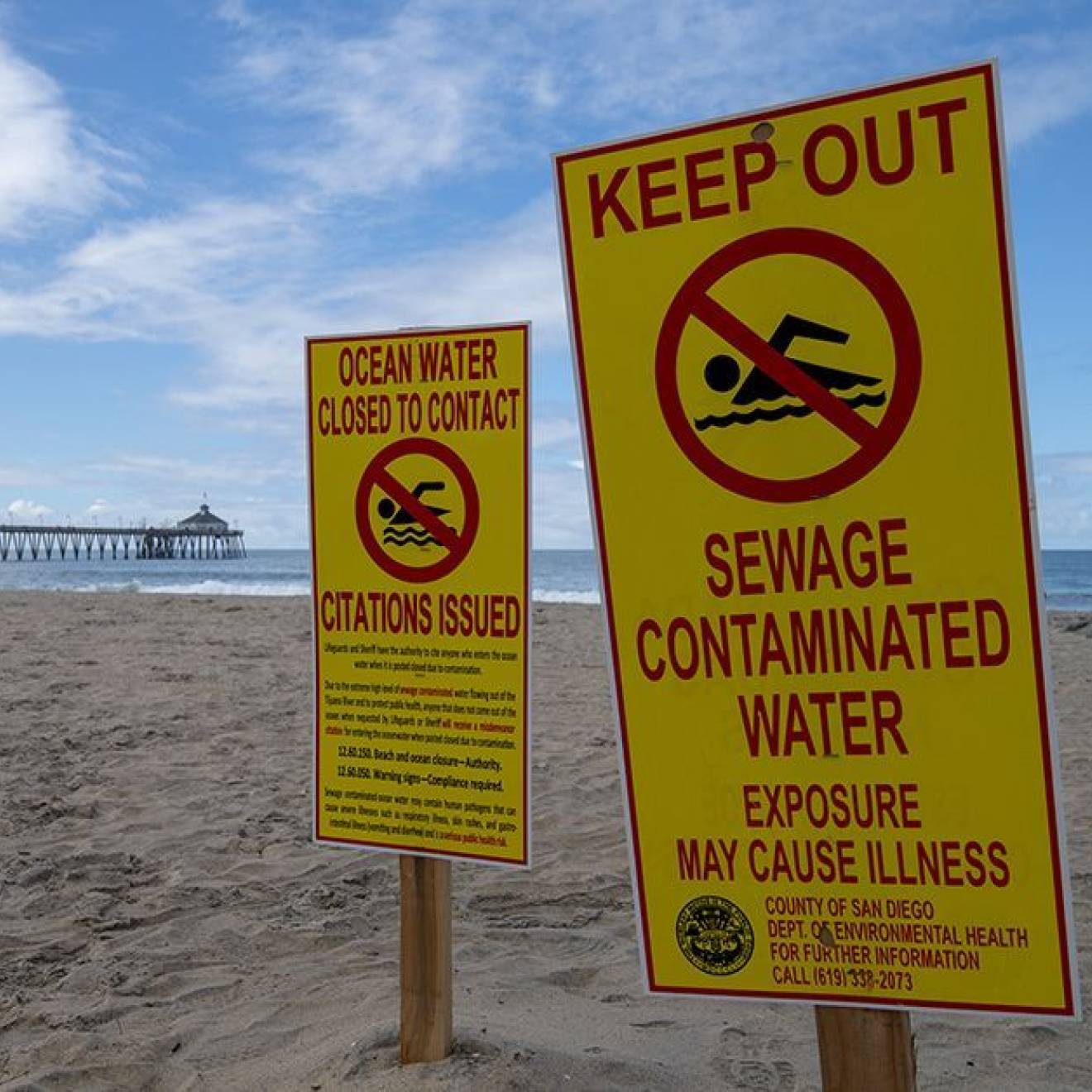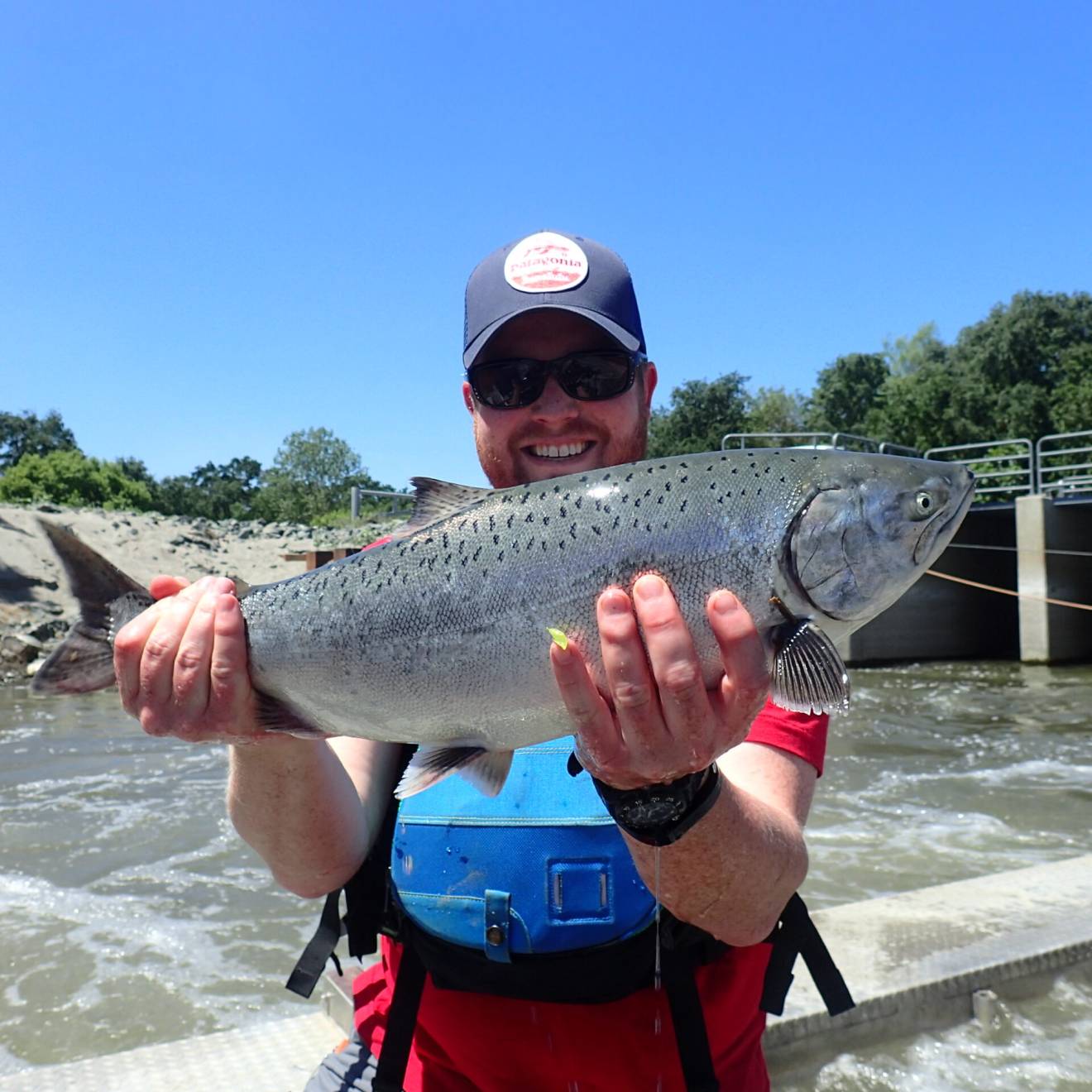Julia Busiek, UC Newsroom
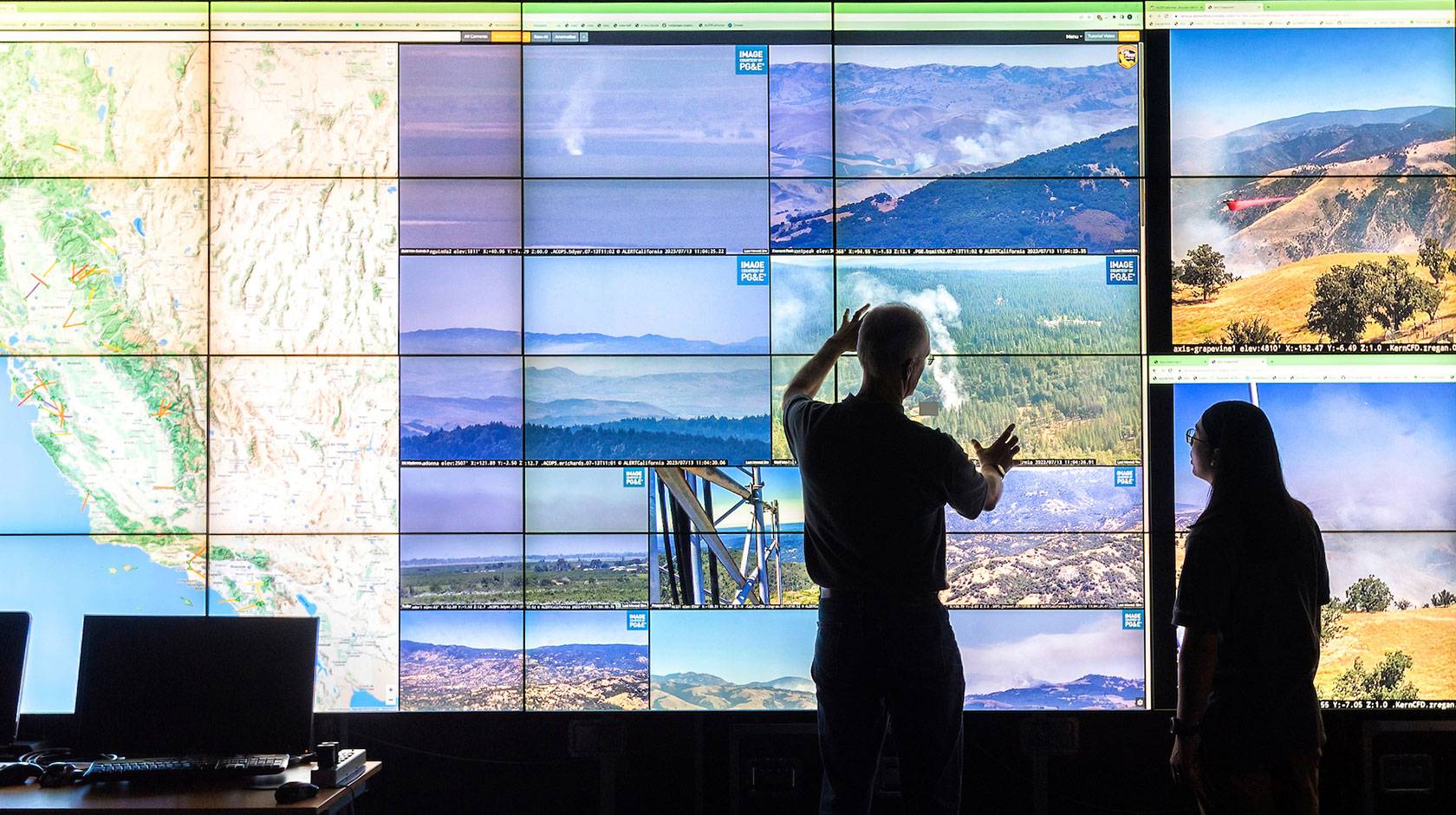
Since the University of California’s earliest days, its researchers have propelled the state’s leading industries and helped solve some of its biggest challenges. Our faculty bring curiosity, ingenuity and years of accumulated expertise to their research. But even the nimblest human brain can only crunch so many numbers in a day.
That’s where AI comes in. It can sift through massive troves of data, picking out patterns and making predictions that put vital insights within reach. As AI gets more powerful and easier to use, UC researchers are finding ways to integrate these emerging technologies into their work, shortening the distance to solutions that benefit every Californian.
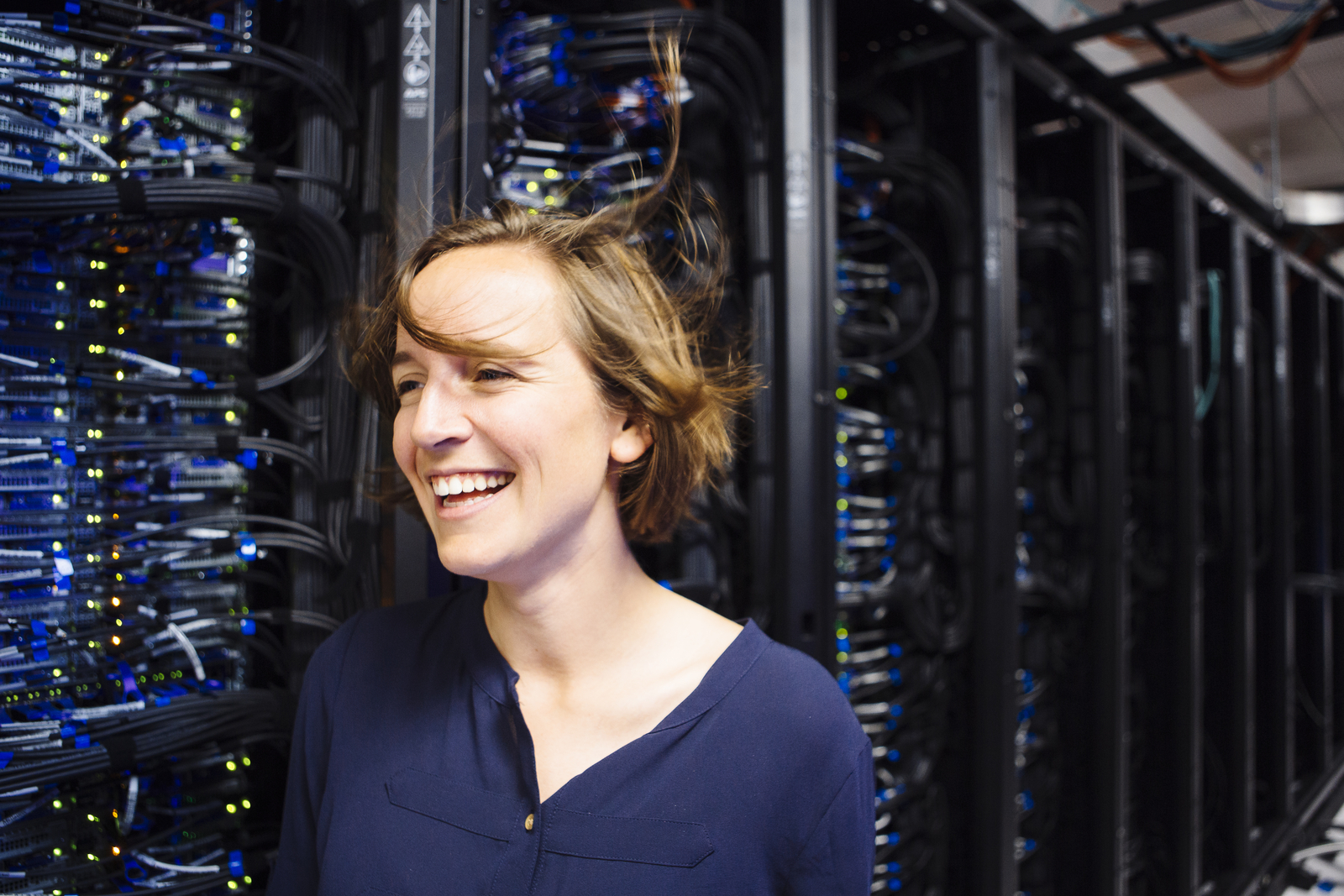
“AI can potentially unravel complex systems and amplify our capacity to better understand interrelated phenomena around some of the world’s greatest challenges,” says UC Vice President of Research & Innovation Theresa Maldonado. Across science, medicine and engineering, as well as humanities and the law, UC researchers are showing how AI can amplify human potential, rather than substitute it, and enhance our creativity and capacity for innovation, Maldonado says.
From preventing homelessness to early identification of Alzheimer's disease, here are some of the ways UC researchers are putting AI to work for California.
Shortening your daily commute
If you are a Californian or you’ve ever attempted to make small talk with one, you know that traffic is a big deal here. And for good reason: the average driver in the Los Angeles or San Francisco metro areas — together home to about half of the state’s population — spends the equivalent of four days per year stuck in traffic, at a cost of $1,600 in wasted fuel and economic opportunity per driver.
The roots of California’s epic congestion run deep, through generations of public policies that have left many Californians with little choice but to own cars and use them a lot. But at least part of the problem is basic instinct. In heavy traffic, one tap on the brakes can ripple through a line of cars, triggering a slowdown, gridlock, or even a crash.
UC Berkeley scientists are testing whether sprinkling just a few AI-equipped vehicles into the rush hour mix can ease these phantom jams, making your commute faster, safer and less energy-intensive. Over one work week in 2022, human drivers piloted a hundred AI-augmented vehicles onto a chronically congested stretch of Interstate 24 in Nashville during the morning commute. Each vehicle in the AI fleet gathered data about and responded to traffic in its vicinity and was also networked with all of the other cars in the fleet.
It worked. “Preliminary results suggest that, even with a small proportion of these vehicles on the road, we can effectively change the overall behavior of traffic,” said Alexandre Bayen, director of the Center for Information Technology Research in the Interest of Society and the Banatao Institute (CITRIS). Bayen led the study, which was funded by the National Science Foundation, the U.S. Department of Transportation, the U.S. Department of Energy and the Federal Highway Administration, among others. “The game changer here was the coordination — the fact that the vehicles leverage each other’s presence and can react preemptively to downstream traffic conditions and improve overall fuel efficiency of traffic on the freeway.”
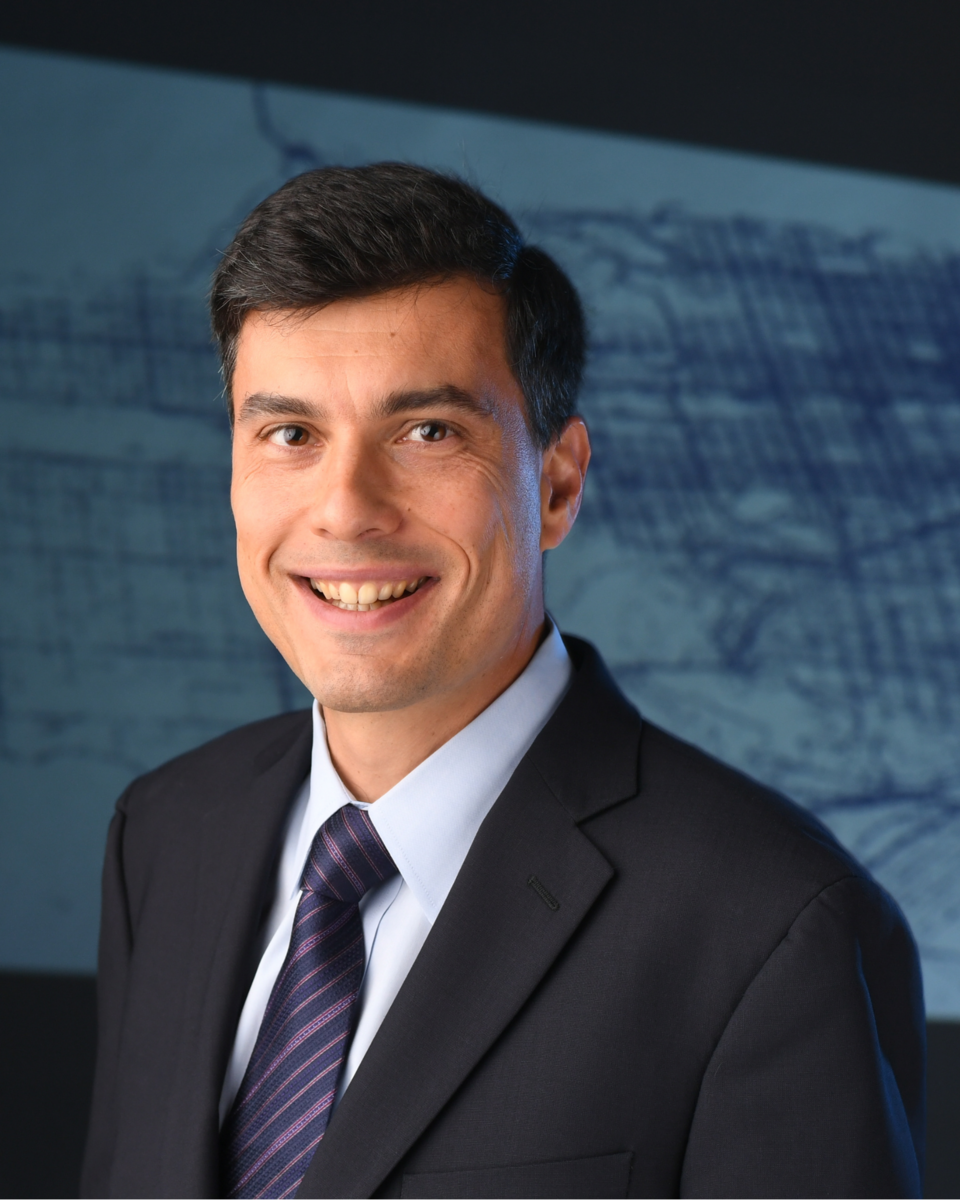
Alexandre Bayen, professor of electrical engineering and computer science at UC Berkeley and head of the CIRCLES Consortium traffic study.
Helping prevent homelessness
According to recent research from UC San Francisco’s Benioff Homelessness and Housing Initiative, most unhoused Californians say a bit of financial help at the right time would have been all they needed to hang on to the housing they’d lost. Public agencies provide that kind of support, but they’ve struggled to get it out to people who are at the highest risk of becoming homeless — in part because it’s hard to know who falls into that category.
“Here in Los Angeles, you might have several million people on public assistance, all of whom seem vulnerable. But in any given year, only one to two percent of them will enroll in homelessness services for the first time," said Janey Rountree, executive director of the California Policy Lab at UCLA. With the predictive capabilities of AI, Rountree’s team is helping Los Angeles County identify the people for whom a little bit of assistance will make the biggest difference.
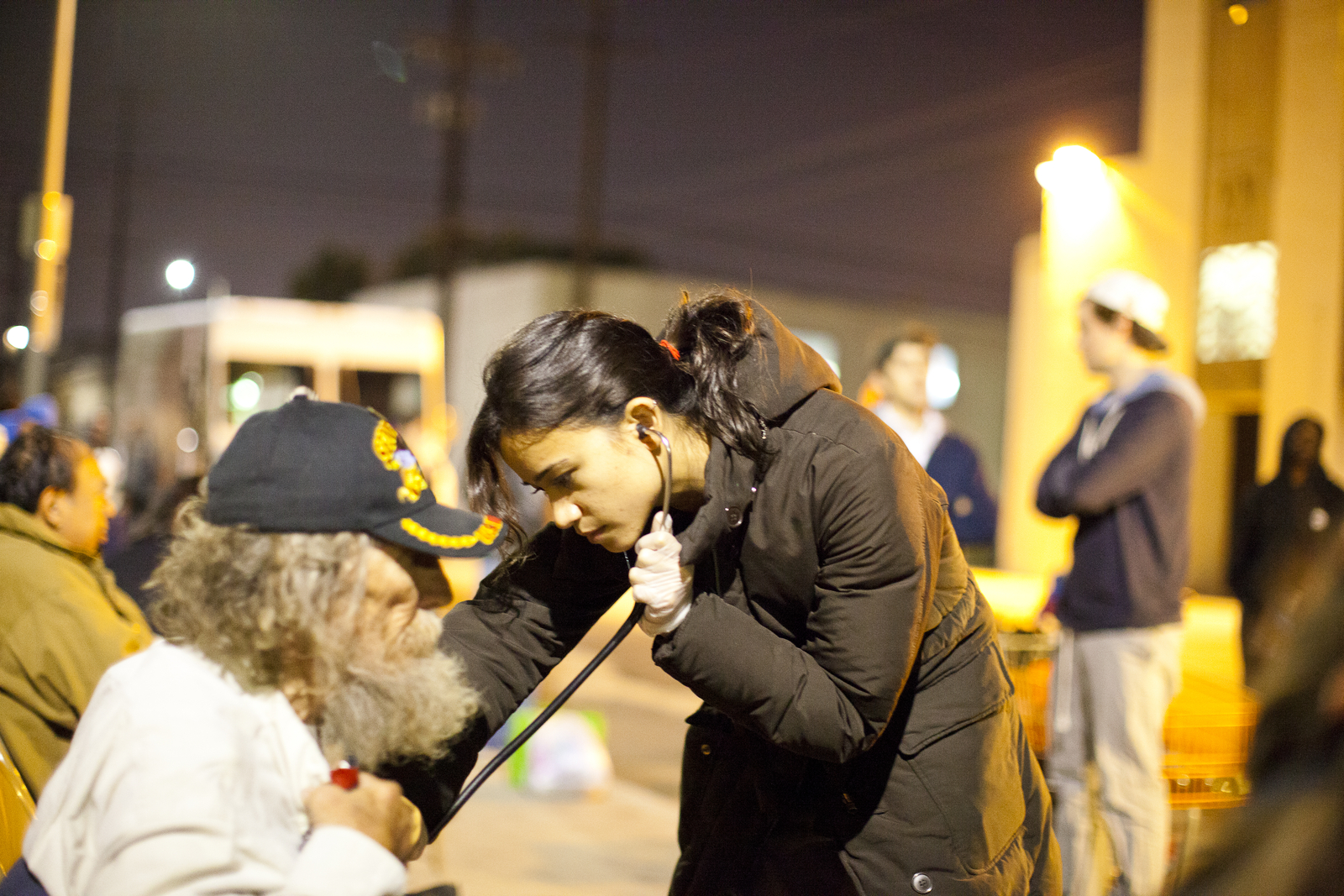
Her research group uses anonymized records from a half-dozen county agencies, reflecting emergency room visits, mental health and substance use disorder care, and use of public benefits. They’ve created an algorithm that predicts which people are at highest risk of experiencing homelessness in the near future. Rountree says the algorithm is more than three times better at predicting a person’s chances of becoming homeless than a random guess. These are the folks that agency staff track down to offer tailored support, such as short-term funding to cover expenses and help people stabilize their housing situation.
Since the pilot launched in 2021, Los Angeles County has offered support to over 700 Angelenos who are at high risk for homelessness. Eight-six percent of them remain housed.
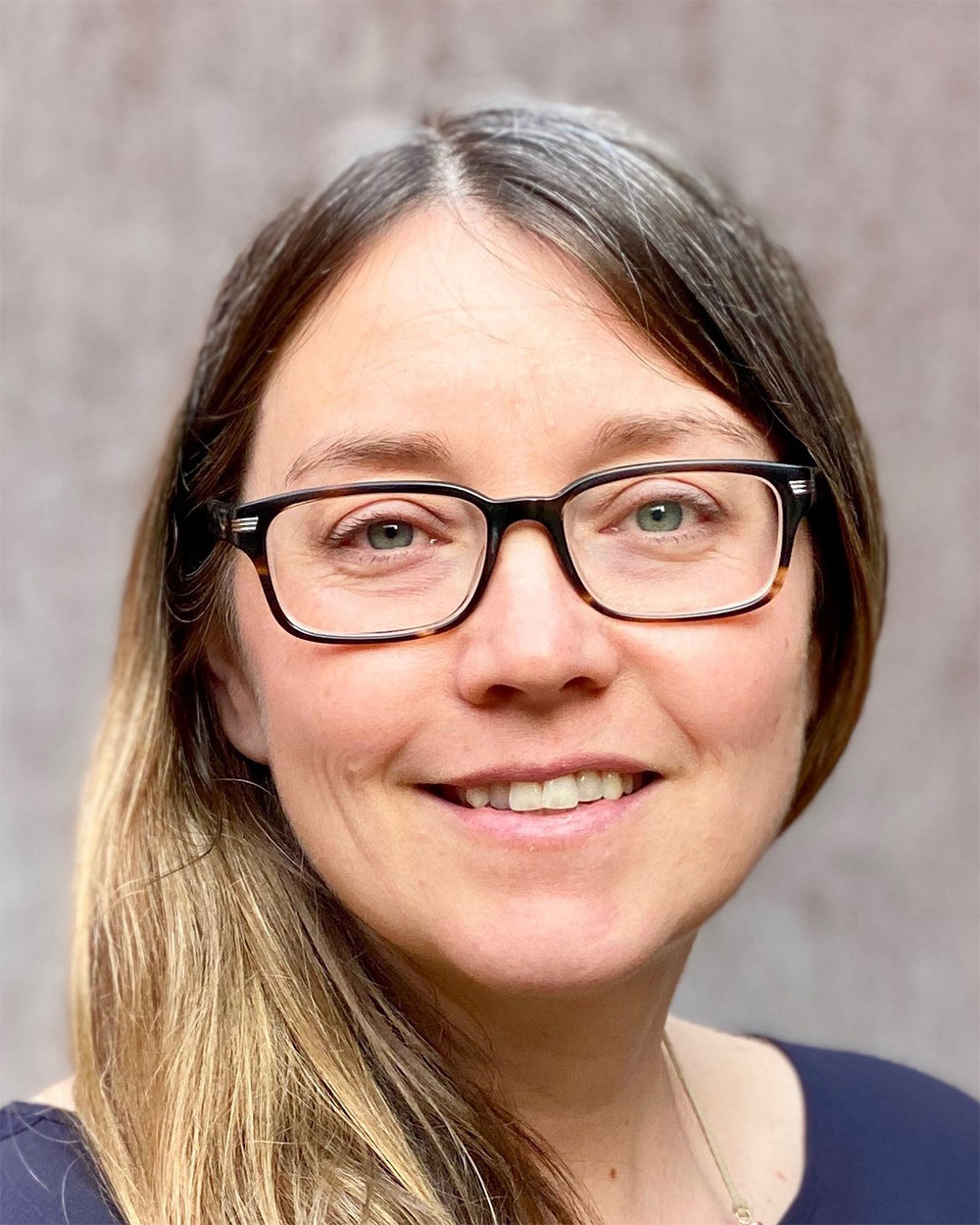
Janey Rountree, executive director of the California Policy Lab at UCLA
Growing more and better food
Whether they realized it or not, humans started tinkering with genes way back in Mesopotamia, when early farmers started selecting the seeds of the tastiest or hardiest plants from the harvest to plant the next season. Despite 10,000 years of advances in our understanding of genetics, it’s still time-consuming to untangle the complex, nonlinear relationships between a plant’s genes and the traits that emerge as it grows.
“We can get gains more quickly if we can accurately predict how the next generation is going to perform, or how a given crop variety might perform in a new environment where we haven’t tested it before,” said UC Davis Plant Sciences professor Christine Diepenbrock. She’s a researcher with the AI Institute for Next Generation Food Systems, a six-university consortium based at UC Davis funded by the U.S. Department of Agriculture and the National Science Foundation.
Diepenbrock uses artificial intelligence to accelerate the age-old process of trying to grow more and better food with fewer resources. In a 2023 study, her lab used machine learning to pinpoint the genes that boost levels of provitamin A carotenoids in maize. This vital nutrient is scarce in most strains of the crop, which is part of the reason that vitamin A deficiency is most common in parts of the world where maize is a dietary staple. Vitamin A deficiency is linked with vision loss, eczema, infection, infertility and more.
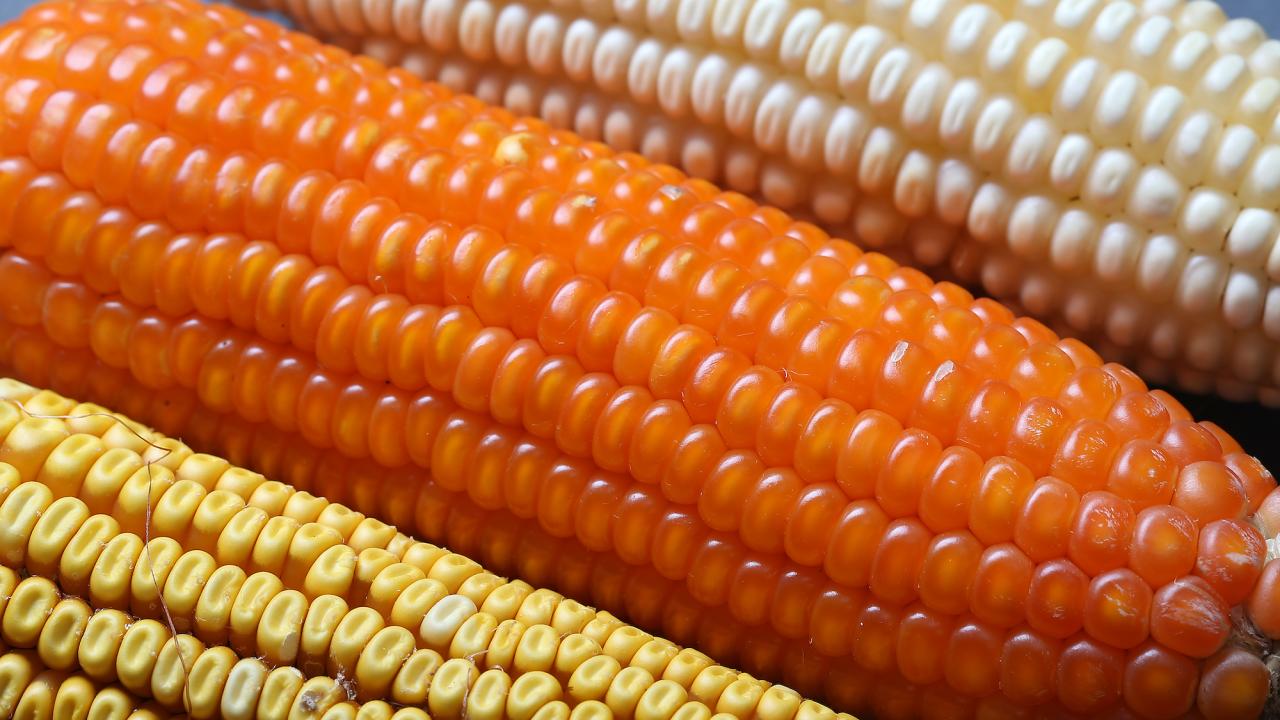
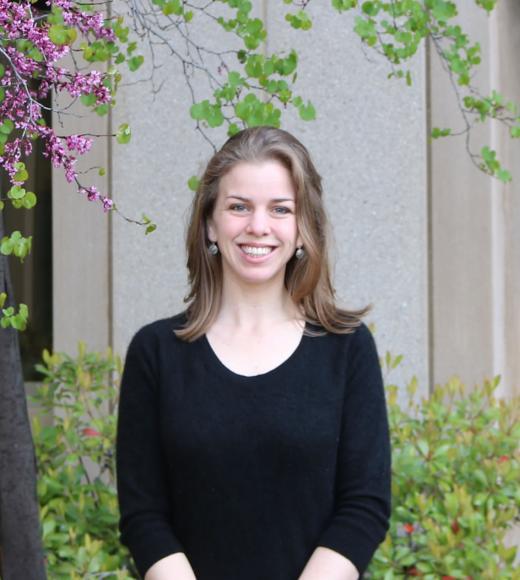
Christine Diepenbrock, UC Davis Plant Sciences professor and researcher with the AI Institute for Next Generation Food Systems.
Diagnosing Alzheimer’s in time for early intervention
An Alzheimer’s drug called donanemab recently cleared another hurdle on the path to F.D.A approval. An expert panel determined that the new treatment’s benefit — a modest slowing of cognitive decline — outweighed its risks. These benefits were most pronounced for patients in earlier stages of the disease, a finding that underscores the life-changing importance of catching Alzheimer’s as soon as possible.
Now, UC San Francisco scientists are using AI to predict Alzheimer’s disease years before symptoms appear. Alice Tang, an M.D./Ph.D. student in the Sirota Lab, wrote an algorithm to analyze the clinical records of 5 million patients, comparing those who eventually developed Alzheimer’s with those who didn’t. The computer looked for patterns in other conditions, such as hypertension, high cholesterol and vitamin D deficiency. Tang’s algorithm was 72% accurate at identifying patients who’d go on to develop Alzheimer’s, up to seven years before symptoms appeared.
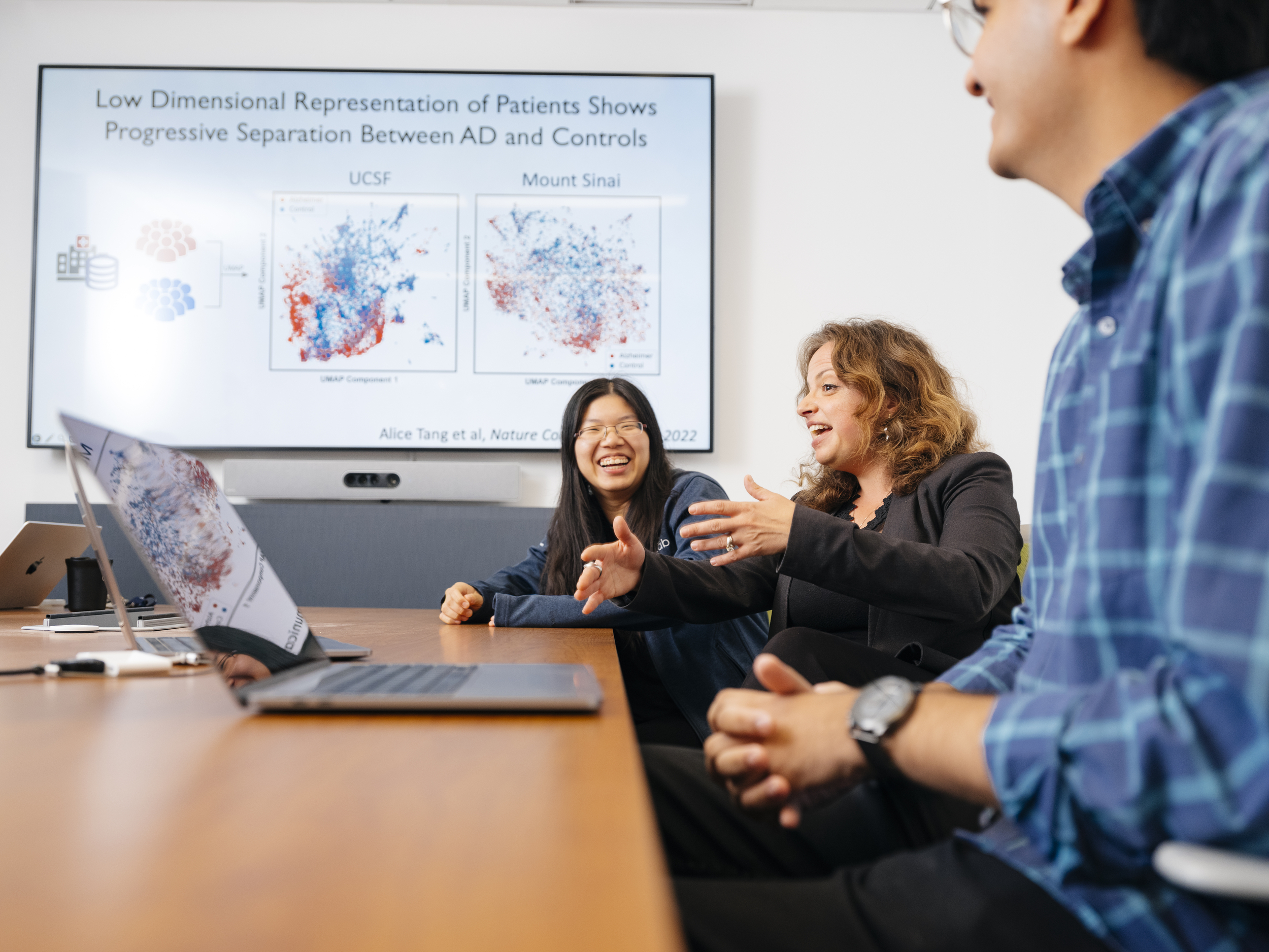
“This is a first step towards using AI on routine clinical data, not only to identify risk as early as possible, but also to understand the biology behind it,” said Tang of the National Institutes of Health-funded study. “The power of this AI approach comes from identifying risk based on combinations of diseases.”
Tang is one of many UC researchers who are using AI to get diagnoses quicker, cheaper, more accurately, and even more equitably. Studies show promise for conditions ranging from heart disease to cancer to traumatic brain injuries and many more.
Alerting first responders to wildfire
As climate change fuels more and bigger fires statewide, rapid response from firefighters has never been more important. Now, a UC San Diego program called ALERTCalifornia is bringing the power of artificial intelligence to assist the age-old job of fire spotting.
UC San Diego scientists utilized 20 years of archival footage of wildfires and combined it with CAL FIRE’s expertise to train computers to recognize smoke and flames within the network’s camera views. Now, they’re gathering data from cameras aimed at fire-prone areas throughout the state. When smoke appears in a frame, the system alerts firefighters, so they can confirm ignition and start making decisions about how to respond sooner. ALERTCalifornia’s cameras never sleep and can spot signs of fire 60 miles off during the day and 120 miles away on a clear night. With more than a thousand cameras distributed throughout the state, the system has also helped first responders and scientists monitor mudslides, atmospheric rivers and even the elusive, endangered California condor.
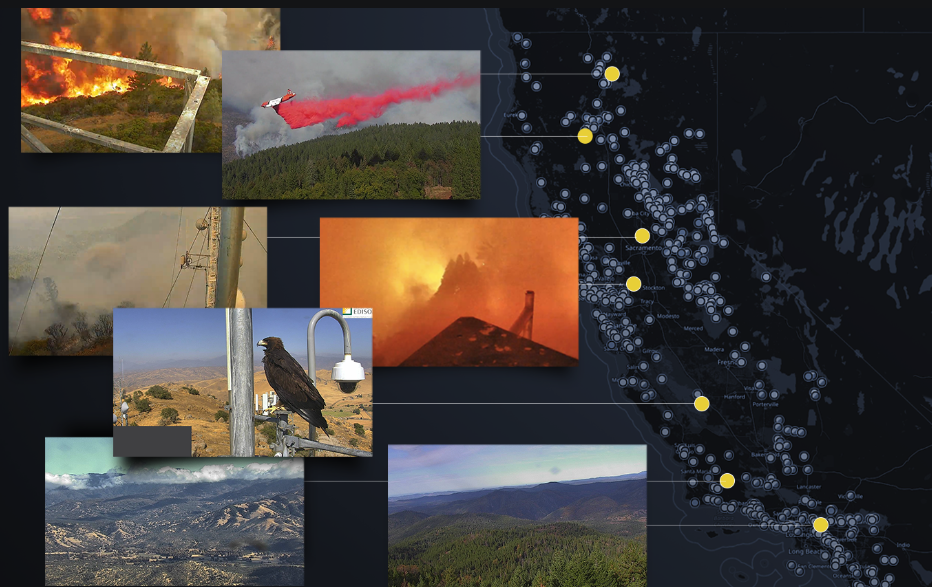
CAL FIRE piloted the AI tool in six regions starting last summer. It worked so well, in some cases tipping firefighters off to a new ignition before the first 911 call came in, that the agency expanded it to all 21 of its units within a few months. And this summer, CAL FIRE added feeds from ALERTCalifornia’s cameras to every fire incident page, giving everyday Californians up-to-date information on fires that could affect their communities.
Preserving California’s biodiversity
California is home to more kinds of birds than any other state, from the teeny Calliope’s hummingbird to the colossal condor and over 700 species in between. As climate change and development rearrange wildlife habitat and threaten bird life here and around the world, the importance of keeping tabs on how species are faring only grows. But traditional bird surveys, carried out by people hiking into bird territory and keeping their eyes and ears out for calls or sightings, are a big job.
UC Merced Computer Science and Engineering Professor Shawn Newsam and Electrical Engineering and Computer Science graduate student Shrishail Baligar used a type of artificial intelligence called a convolutional neural network to make bird surveys more efficient and accurate. They teamed up with researchers at Sonoma State University and Point Blue Conservation Science to train an algorithm to recognize a bird’s call. Then Newsam and Baligar fed the algorithm over 8,000 hours of audio from 600 recorders distributed around Sonoma County. Much like a skilled human birder can, the algorithm learned to parse and identify many of the overlapping calls the recorders picked up, eventually detecting 54 species.
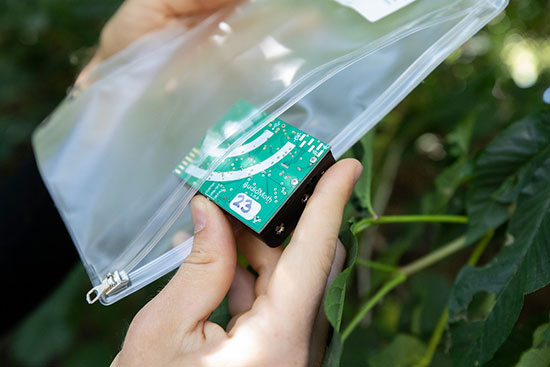
Unlike human birders, each recorder stayed in the field for 2 weeks straight, improving any one microphone’s chance of picking up whatever birds were nearby. And the tiny microphones didn’t alter the birds’ behavior like the presence of humans can, another factor than can affect the accuracy of a survey’s data.
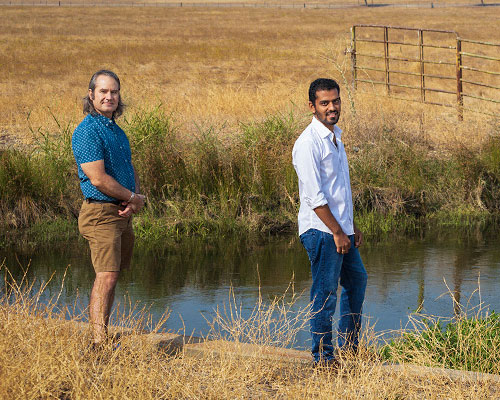
Shawn Newsam, left, and Shrishail Baligar, UC Merced scientists who used artificial intelligence to inform bird population research.
AI shows incredible promise to help solve some of California’s biggest problems, notes Ramesh Srinivasan, professor of information studies and design/media arts at UCLA. But AI also carries risks for the Golden State, and UC experts are shaping the growing conversation about how to make sure these technologies are not only effective and accessible, but safe and equitable as well.
“The question is not ‘machine good’ or ‘machine bad,” Srinivasan said. “It is, ‘How can we ensure these machines serve humanity?’”
